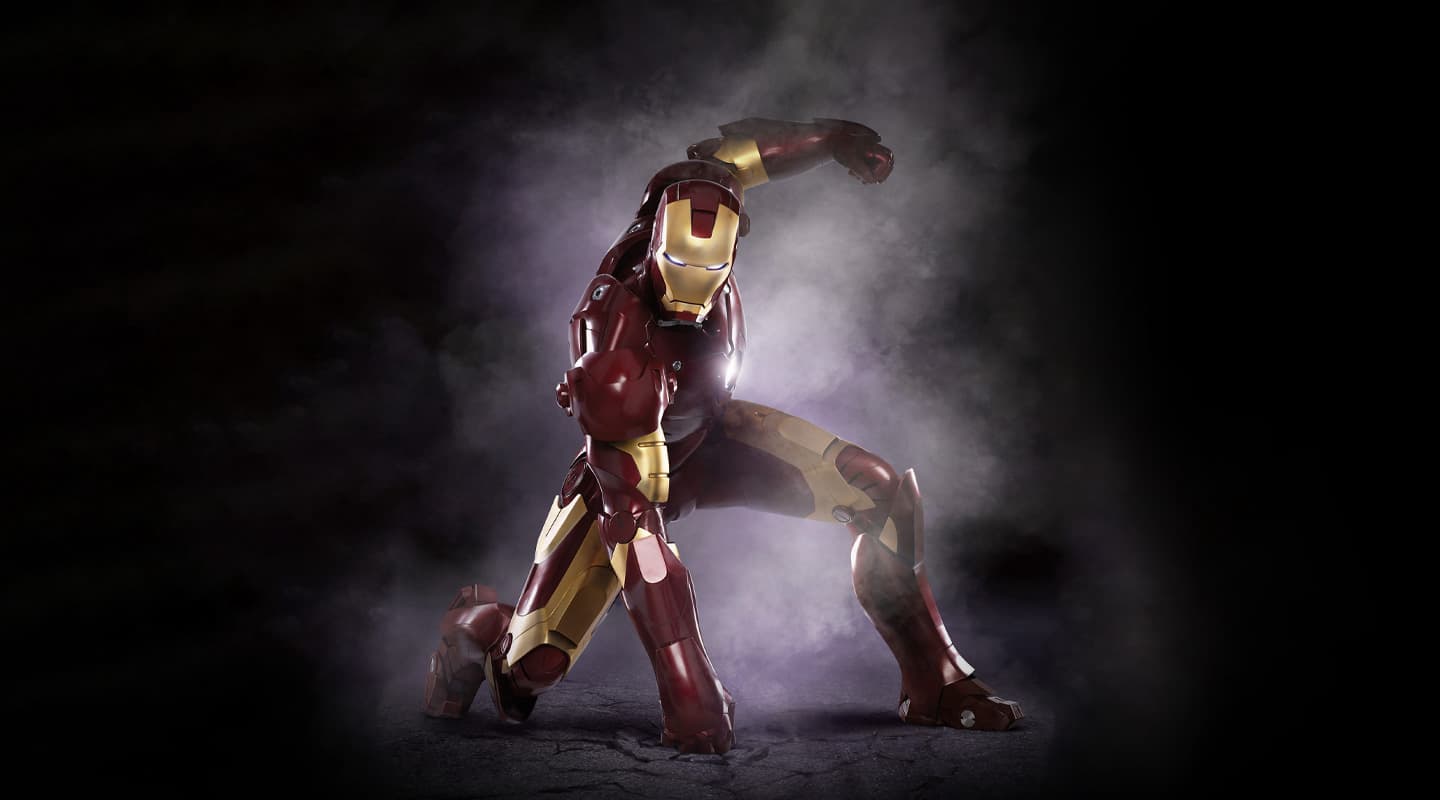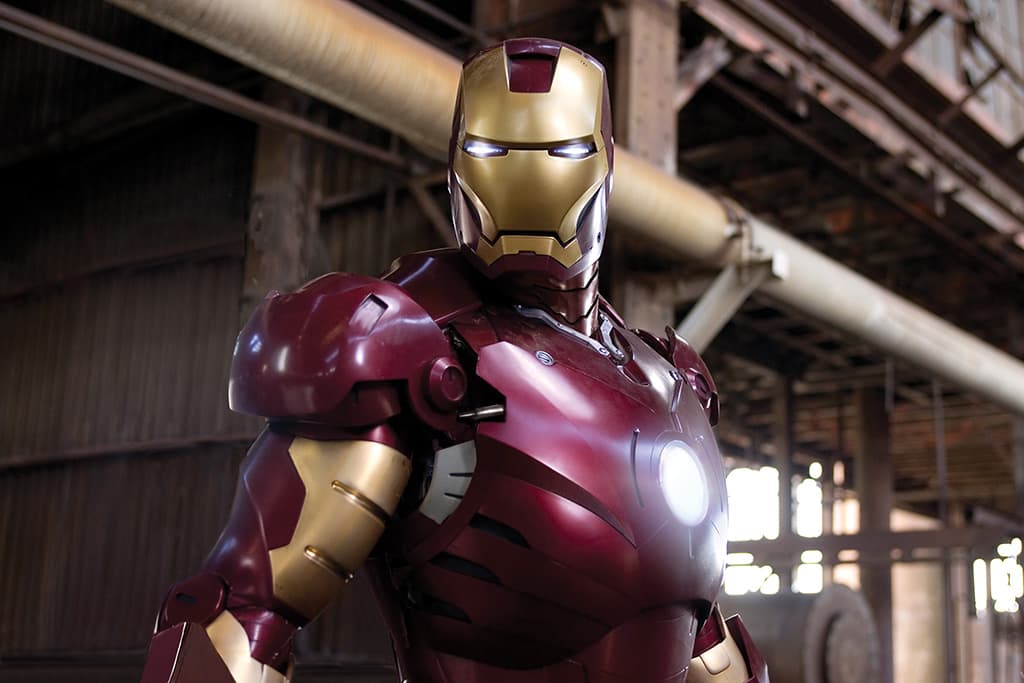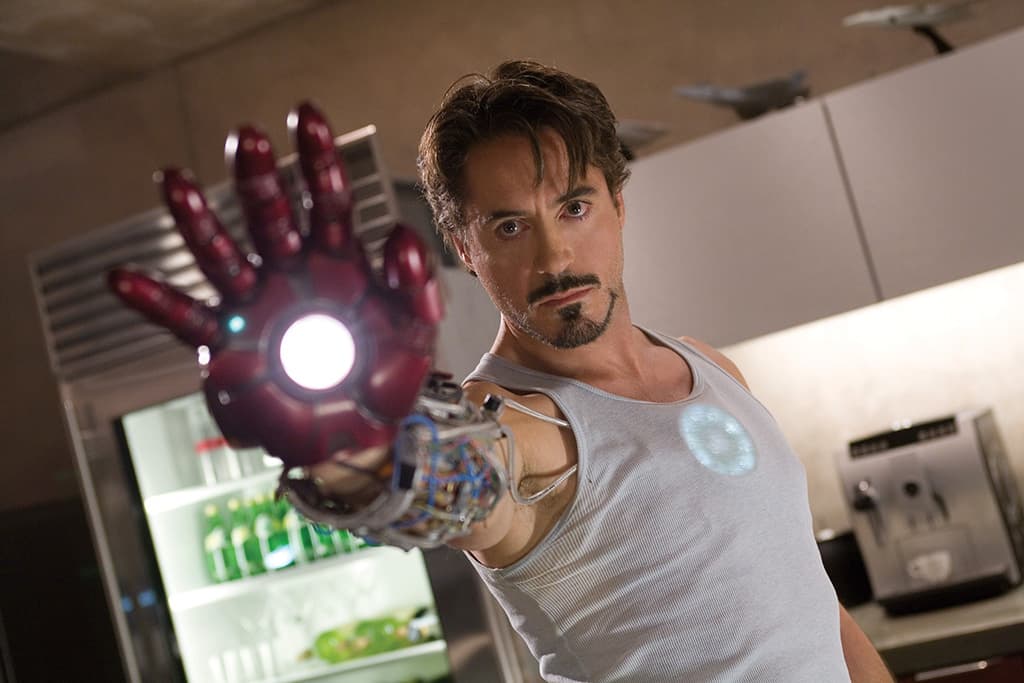
Iron Man
Veteran Sound Designer and Re-recording mixer, Christopher Boyes, suits up for this big-budget action flick.
Text: Strother Bullins
The story of Marvel Comics’ Anthony Edward ‘Tony’ Stark is a compelling one. Wealthy/charismatic businessman/inventor, Stark is badly injured, and creates a self-saving suit of armour that doubles as a means to protect the world. As Iron Man, Stark is the ultimate mechanical/technological innovation on his exterior, and entirely human on the interior.
It was this premise that drove the sound design. Up to the challenge was Skywalker Sound’s Christopher Boyes, who accepted the dual roles of Sound Designer and Re-recording Mixer for Iron Man – directed by Jon Favreau and starring the inimitable Robert Downey Jr. as Stark.
Throughout the film, no matter how incredible Stark’s suits and gadgets become, and no matter how intense his nemesis – Obadiah Stane – aka Iron Monger, played by Jeff Bridges – becomes, Boyes insists the organic, human core of the characters keeps Iron Man a story of man rather than machine.
“That was why the vocals were so important,” offers Boyes on balancing the humanity of the characters. “The [characters] could only step out of the human element so much. At the same time, keeping the components of all the suits sounding organic, as if they were the mechanical version of a body was our challenge from day one. One of the things I’m so proud of is that this is a big sound film, but it’s not super loud. Given the quantity of action in the film, Lora Hirschberg [Music and Dialogue Mixer] and I were very careful to strike a balance of big sound and power, yet without being overbearing.”
GETTING STARTED
Sound-wise, “most everything was done at Skywalker – sound design, premixing and final mix,” tells Boyes. Temp mixes were done at Widget Post, while ADR was handled at Wildfire Studios – both in Los Angeles. “Still, it was predominantly a Skywalker track.”
Late last year, Boyes and company began to send various versions of signature sounds for approval from Favreau and Picture Editor, Dan Lebantal. The first thing that really happened was Industrial Light & Magic’s (ILM) screen test of the Iron Man ‘Mark I’ suit – there are Mark I, Mark II and Mark III suits. Supervising Sound Editor, Frank Eulner, did a pass on that for ILM. Jon saw that and fell in love with Frank’s work. That’s where the job landed on our doorstep, with Frank’s first pass at Mark I.”
At that point, Boyes jumped headfirst into the project, designing signature elements that largely involved Iron Man’s three suits that evolved throughout the film. For Boyes, designing these key sounds early on was essential. “The earlier you can get the process going, the better,” he offers. “Dan will use these elements [in cutting] if he finds a useful cadence of rhythm within those sounds, or if they answer certain story points – he may hold a shot longer, shorter, a close-up, and so on, based on these elements. And Jon wants to learn a sound to educate himself and decide how to use it best. So naturally our goal was to draw as many things into our arsenal as soon as we possibly could.”

SUITING UP
As each suit becomes more refined on screen, each sound set, as developed by Boyes, evolves alongside its visual counterpart in a logical fashion. For Boyes, Mark III’s sounds needed to have the most character. “As it moved I felt this suit needed some sort of signature call to it,” he recalls. “The picture editor, said, ‘You’re right – it needs to be the kind of sound that every kid will want to make when they’re imitating Iron Man.’ And I really struggled with that one, but finally came up with something that, I feel, really represents the evolution of the suits and what this particular suit is about.”
Mark III’s sound also contrasts with the sound of Iron Monger, which itself “was a tremendously difficult job” to design. “In many ways, he’s far more complicated. While Iron Man has this sleek, high-tech suit, Iron Monger is the exact opposite. As Jon [the director] described him, ‘he’s a garbage truck,’ or ‘steam machine’.”
With those two thoughts from the director, Boyes retreated to his studio’s library of sounds to find a ‘steam donkey’ – a century-old winch used to haul logs from gorges. This became the basis of Iron Monger’s rougher sound.
“It made incredible, weird moaning sounds of various different natures. I mined those sounds and plugged them into my Synclavier and made a whole Iron Monger language. I am extremely fortunate to have long working relationships with editors at Skywalker. For example, Frank Eulner and I have worked together for 23 years now and my dear friend J. R. Grubbs has worked with me on numerous projects. Frank did an amazing recording that I used for the foot falls of Monger. So, we built this wonderful sound for the suit, gave it these moans for a voice, and then, as the visual effects for the suit were perfected new elements were developed.”
According to Boyes, Grubbs built and edited together the sounds of Stark’s amazing Mark II form-fitting suit. “It fits him like a glove,” he explains. “These sequences are phenomenal, and they beg to be given believability via sound. At the same time, they needed an arc, in terms of the mounting amazement, and tension. We mined recordings and libraries for every servo, ratchet and automated-type of robotic sound that we could, and J.R. built this incredible sonic sequence of this suit being put together.”
As compared to the Mark I suit, Iron Man’s Mark II bears a close resemblance to Mark III, but it’s flawed. These flaws reveal themselves in the film, requiring their own signature sounds for the sequence. “In building Mark II, Stark takes it into space where he finds it doesn’t take the pressures of space very well,” reveals Boyes. “There’s this wonderful sequence of flying over the Santa Monica coastline and ultimately up into space where the suit ices over and shuts down. It was one of the most enjoyable sequences of the film. Stark rises up to a peak, then starts falling down; the music goes out and it’s the sound of him descending through the wind. It needed to be something more than a servo sound, something that articulated itself in its movements – not a constant sound, but something that supports the movement of the suit.”
Here Boyes’ articulated wavetables of robotic sounds came in handy. “In and of itself, it sounds like a servo,” he explains. “But I started playing with them, putting a rising and falling pitch envelope to them. I also played with convolutions (the Altiverb and the TL Space reverbs), to give them a real metallic resonance. I fell into different elements, using the rise and fall parts, juxtaposing them so that you have a palette of whirring, with a metallic signature.
As Jon [the director] described him, ‘he’s a garbage truck,’ or ‘steam machine’.

THE CHALLENGES OF DIALOGUE
In approaching the final mix of an action film whose hero and villain are often enclosed in elaborate mechanical suits, Boyes and Hirschberg realised that dialogue would be a challenge. “What does Robert’s voice as Tony Stark sound like in the suit?”, rhetorically asks Boyes. “What does Jeff Bridges as Iron Monger sound like? I took their ADR for when they were in the suits and did various different processes with outboard and plug-ins. The idea was to get a version down to Jon and Dan in the picture department and get Jon’s feedback.”
After approval, Boyes’ plug-in settings were sent to a recordist at Wildfire Studios – the facility owned by Sound Designer Leslie Shatz, and Sound Mixer Chris David – for ADR. “That was the first time that I’ve ever been able to do this,” tells Boyes excitedly. “On the ADR stage, the actors get to hear the process that we’ve come up with, and perform into it. It wasn’t simply taking a voice and processing it – it was giving the actor the ability to collaborate with it. ‘Oh, that’s what you’re doing with my voice? Okay, let me do this’, and then they can play into it. It’s dangerous, really fascinating and yielded excellent results. At the same time, I told the recordist, ‘Don’t record them with the effects, only monitor through it. We want the dry versions’. When we got the final stage I would just give the patch to Lora, she would plug it into her dialogue machine and we could further collaborate. She could play around with the parameters with Jon and Dan involved and fine-tune things. It was very successful. With both characters, I found that processing combined with the design of the sounds of their suits made the characters come the full circle.”
Additionally, Favreau was careful to suggest not over-processing the voices in Iron Man. “Boyes’ Iron Man was not a problem; it was only a subtle amount of pitch and resonance. We brought Iron Monger down a fair degree in pitch and Lora brought in some more distortion. We kept them in a register so they were very, very understandable.”
IRON MAN TO THE MASSES
Combining conscientious audio work with great direction, casting, story, and script, Boyes and Hirschberg have mixed a film more conducive to wider appeal. “I do think this film will appeal to a wide audience,” offers Boyes. “The kids want a roller coaster ride, and some of the audience doesn’t want too much of that. So, you look for a balance so you can deliver to both. I think we struck a really good balance in this film.”
In casting, most notable is Downey Jr.’s role as Stark. “I honestly cannot imagine any other actor playing Iron Man, having seen the development of the character,” notes Boyes. “He’s able to bring this incredible wit to the character that you can see is constantly processing. On the whip of a dime, he throws in these half sentences that just crack you up. He never falls back into this one-dimensional character. Meanwhile, Jon knows comedy, and his involvement was a good move on Marvel Comics’ part. He knows action, but he loves comedy. So the mix of Robert and Jon, with the entire cast, was really good. There’s a great chemistry between all the major characters.”
















RESPONSES